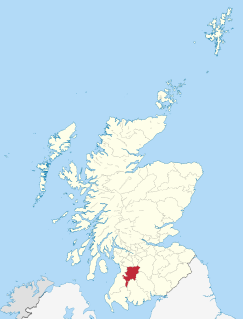The Scottish Labour Party (SLP) was a socialist party in Scotland that was active 1976–1981. It formed as a breakaway from the UK Labour Party. It won three council seats in 1977 but lost its MPs at the 1979 election and was dissolved two years later.

The 79 Group was a faction within the Scottish National Party (SNP), named after its year of formation, 1979. The group sought to persuade the SNP to take an active left-wing stance, arguing that it would win more support, and were highly critical of the established SNP leaders. Although it had a tiny membership, the group caused sufficient disquiet that it was expelled from the SNP in 1982, although its members were subsequently readmitted and many attained senior positions in the Scottish Government after 2007; former First Minister Alex Salmond (2007-2014) was a leading member of the group.
John McAllion is a campaigner for the Scottish Socialist Party, as well as former Labour Party Member of Parliament (MP), Member of the Scottish Parliament (MSP), and convenor of Tayside Regional Council. He is also convener of the Scottish Fairtrade Forum.
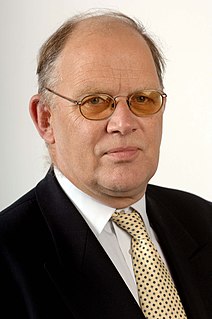
Adam Hamilton Ingram is a Scottish politician who was a Scottish National Party (SNP) Member of the Scottish Parliament (MSP) from 1999 to 2016. He was first a MSP for the South of Scotland region from 1999 to 2011, then the MSP for the Carrick, Cumnock and Doon Valley constituency from 2011 to 2016.

The Scottish Labour Party (SLP), also known as the Scottish Parliamentary Labour Party, was formed by Robert Bontine Cunninghame Graham, the first socialist MP in the parliament of the United Kingdom, who later went on to become the first president of the Scottish National Party, and Keir Hardie, who later became the first leader of the British Labour Party.
John Robertson was a British politician, who sat as a Labour Member of Parliament before co-founding the Scottish Labour Party (SLP) in 1976.
In Scotland, the Scottish National Party (SNP) is a centre left, social democratic political party which campaigns for Scottish independence. The SNP has controlled Scotland's devolved legislature since the 2007 election as a minority government, and since the 2011 election as a majority government. Its leader, Nicola Sturgeon, is the First Minister of Scotland.

Ayr, Carrick, and Cumnock is a county constituency represented in the House of Commons of the Parliament of the United Kingdom. It was created for the 2005 general election from parts of the old Ayr and Carrick, Cumnock and Doon Valley constituencies. It has been represented since 2017 by Bill Grant of the Scottish Conservative Party.
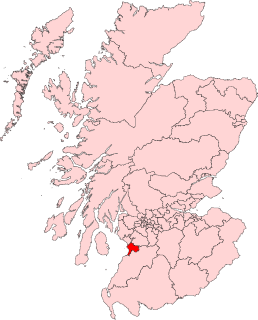
Ayr was a county constituency of the House of Commons of the Parliament of the United Kingdom from 1950 to 2005. It elected one Member of Parliament (MP) by the first-past-the-post system of election.
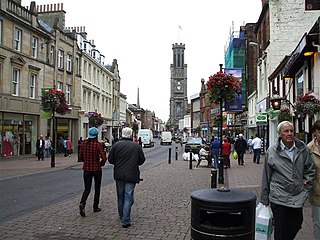
Ayr is a burgh constituency of the Scottish Parliament (Holyrood) which elects one Member of the Scottish Parliament (MSP) via the plurality electoral system. It is also one of nine constituencies in the South Scotland electoral region which elects seven additional members to the Scottish Parliament via a proportional electoral system known as the Additional Members System which allows for fairer representation for the region as a whole.

Carrick, Cumnock and Doon Valley is a county constituency of the Scottish Parliament at Holyrood, Scotland. It elects one Member of the Scottish Parliament (MSP) by the plurality method of election. Also, it is one of nine constituencies in the South Scotland electoral region, which elects seven additional members, in addition to the nine constituency MSPs, to produce a form of proportional representation for the region as a whole.

Carrick, Cumnock and Doon Valley was a county constituency represented in the House of Commons of the Parliament of the United Kingdom from 1983 until 2005. Half of the constituency was incorporated into the new Ayr, Carrick and Cumnock constituency, with the remainder incorporated into the new Central Ayrshire constituency and the expanded Kilmarnock and Loudoun constituency.
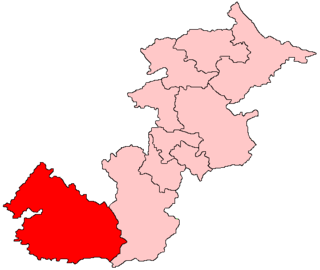
Kilmarnock and Loudoun was a constituency of the Scottish Parliament (Holyrood). It elected one Member of the Scottish Parliament (MSP) by the plurality method of election.

Doonfoot is a suburb in the south-west of Ayr, South Ayrshire.
The Coatbridge and Airdrie by-election, 1982 was a parliamentary by-election held on 24 June 1982 for the British House of Commons constituency of Coatbridge and Airdrie.

There were elections for the Scottish district councils in 1977.

Midlothian South, Tweeddale and Lauderdale is a constituency of the Scottish Parliament (Holyrood). Since the 2011 election, it has elected one Member of the Scottish Parliament (MSP) by the plurality method of election. Also, however, it is one of nine constituencies in the South Scotland electoral region, which elects seven additional members, in addition to nine constituency MSPs, to produce a form of proportional representation for the region as a whole.

Kilmarnock and Irvine Valley is a constituency of the Scottish Parliament (Holyrood). It elects one Member of the Scottish Parliament (MSP) by the plurality method of election. Also, it is one of nine constituencies in the South Scotland electoral region, which elects seven additional members, in addition to the nine constituency MSPs, to produce a form of proportional representation for the region as a whole.
The 1980 Cumnock and Doon Valley District Council Election was held on 1 May 1980, the same day as the other Scottish local government elections, and constituted the second election for the Council.
